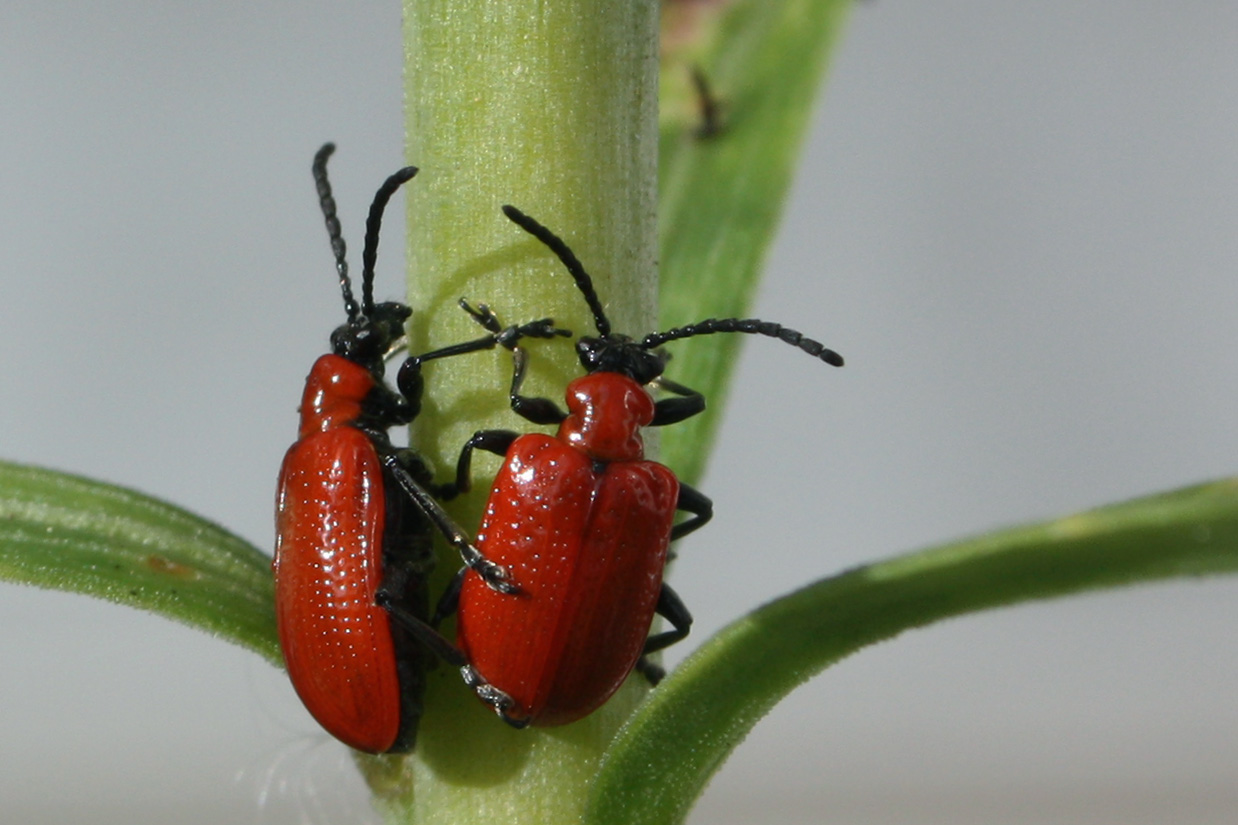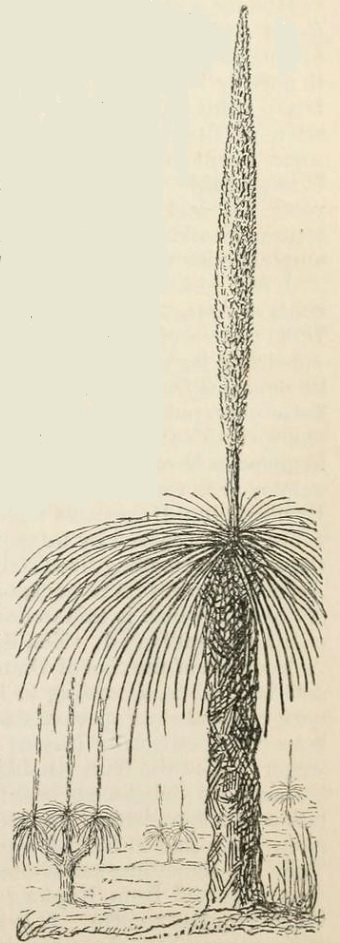|
Hosta
''Hosta'' (, synonym (taxonomy), syn. ''Funkia'') is a genus of plants commonly known as hostas, plantain lilies and occasionally by the Japanese name gibōshi. Hostas are widely cultivated as shade-tolerant foliage plants. The genus is placed in the family (biology), family Asparagaceae, subfamily Agavoideae, and is native plant, native to northeast Asia (China, Japan, Korea, and the Russian Far East). Like many "lilioid monocots", the genus was once classified in the Liliaceae. The genus was named by Austrian botanist Leopold Trattinnick in 1812, in honor of the Austrian botanist Nicolaus Thomas Host, Nicholas Thomas Host. In 1817, the generic name ''Funkia'' was used by German botanist Kurt Polycarp Joachim Sprengel, Kurt Sprengel in honor of Heinrich Christian Funck, a collector of ferns and alpines. It was later used as a common name and is referenced in some older literature. Description Hostas are Herbaceous plant, herbaceous Perennial, perennial plants, growing from rhi ... [...More Info...] [...Related Items...] OR: [Wikipedia] [Google] [Baidu] |
Libertia
''Libertia'' is a genus of monocotyledonous plants in the family Iridaceae, first described as a genus in 1824.Sprengel, Curt Polycarp Joachim 1824. Systema Vegetabilium, editio decima sexta 1: 127 in Latin It is native to South America, Australia, New Guinea, and New Zealand. Eight species are endemic (ecology), endemic to New Zealand.Kew World Checklist of Selected Plant Families /ref> ''Libertia'' is made up of herbaceous or evergreen perennial plant, perennials growing from short rhizomes, with simple, li ... [...More Info...] [...Related Items...] OR: [Wikipedia] [Google] [Baidu] |
Leopold Trattinnick
Leopold Trattinnick (26 May 1764 in Klosterneuburg – 24 January 1849 in Vienna) was an Austrian botanist and mycologist. He was a curator of the Royal Natural History collection in Vienna. He published several mycological and other botanical works. Most of these works were illustrated with engravings and many of them were hand coloured (pre-colour printing). He also gave out collections of wax replicas of species of fungi and later sponges. Biography Leopold Trattinnick was born on 26 May 1764 near Vienna to a wealthy and influential family. He originally began to study law but his interests in nature grew and he started studying Science and divided his time amongst the fields of entomology, mineralogy and botany. His main area of Interest was mycology and spermatophytes. In 1797, he published 'Anleitung zur Cultur der ächten Baumwolle in Österreich' (translated as 'Introduction to the culture of true cotton in Austria'). It was his first botanical publication. This was fol ... [...More Info...] [...Related Items...] OR: [Wikipedia] [Google] [Baidu] |
Agavoideae
Agavoideae is a subfamily of monocot flowering plants in the family Asparagaceae, order Asparagales. It has previously been treated as a separate family, Agavaceae. The group includes many well-known desert and dry-zone types, such as the agaves and yuccas (including the Joshua tree). About 640 species are placed in around 23 genera; they are widespread in the tropical, subtropical, and warm temperate regions of the world. Description and uses Species may be succulent or not. In general, Agavoideae leaves occur as rosettes at the end of a woody stem, which may range from extremely short to tree-like heights, as in the Joshua tree. The leaves are parallel-veined, and usually appear long and pointed, often with a hardened spine on the end, and sometimes with additional spines along the margins. ''Agave'' species are used to make ''tequila, pulque,'' and ''mezcal'', while others are valued for their fibers. They are quite popular for xeriscaping, as many have showy flowers. Syste ... [...More Info...] [...Related Items...] OR: [Wikipedia] [Google] [Baidu] |
Cornutia
''Cornutia'' is a genus of plants in the family Lamiaceae, first described in 1753. Species in this genus are native to tropical parts of the Western Hemisphere, including southern Mexico, Central America, the West Indies, and northern South America.Jørgensen, P. M. & S. León-Yánez. (eds.) 1999. Cat. Vasc. Pl. Ecuador. Monographs in systematic botany from the Missouri Botanical Garden 75: i–viii, 1–1181 Species This genus includes the following species: *''Cornutia australis'' Harold Norman Moldenke, Moldenke - Ecuador, Brazil *''Cornutia coerulea'' (Jacq.) Moldenke - Jamaica *''Cornutia jamaicensis'' Moldenke - Jamaica *''Cornutia obovata'' Ignatz Urban, Urb. - Puerto Rico *''Cornutia odorata'' (Eduard Friedrich Poeppig, Poepp.) Johannes Conrad Schauer, Schauer - Venezuela, Colombia, Ecuador, Peru *''Cornutia pubescens'' Karl Friedrich von Gaertner, C.F.Gaertn. - French Guiana *''Cornutia pyramidata'' L. - southern Mexico (Veracruz, Tabasco, Oaxaca, Yucatán Peninsula, Chi ... [...More Info...] [...Related Items...] OR: [Wikipedia] [Google] [Baidu] |
Nicolaus Thomas Host
Nicolaus Thomas Host (December 7, 1758 in Fiume, now Rijeka – January 13, 1834 in Vienna) was a Croatian botanist and the personal physician of Holy Roman Emperor Francis II. His botanical works include ''Synopsis plantarum in Austria'' and the four-volume ''Austriacorum Icones et descriptions graminum''; he was also the first director of the botanical garden at the Belvedere palace. The genus ''Hosta ''Hosta'' (, synonym (taxonomy), syn. ''Funkia'') is a genus of plants commonly known as hostas, plantain lilies and occasionally by the Japanese name gibōshi. Hostas are widely cultivated as shade-tolerant foliage plants. The genus is placed ...'' is named for him.http://www.cfgphoto.com/articles/hosta.html References 1758 births 1834 deaths 18th-century physicians from the Holy Roman Empire {{austria-botanist-stub ... [...More Info...] [...Related Items...] OR: [Wikipedia] [Google] [Baidu] |
Liliaceae
The lily family, Liliaceae, consists of about 15 genera and 610 species of flowering plants within the order Liliales. They are monocotyledonous, perennial, herbaceous, often bulbous geophytes. Plants in this family have evolved with a fair amount of morphological diversity despite genetic similarity. Common characteristics include large flowers with parts arranged in threes: with six colored or patterned petaloid tepals (undifferentiated petals and sepals) arranged in two whorls, six stamens and a superior ovary. The leaves are linear in shape, with their veins usually arranged parallel to the edges, single and arranged alternating on the stem, or in a rosette at the base. Most species are grown from bulbs, although some have rhizomes. First described in 1789, the lily family became a paraphyletic "catch-all" ( wastebasket) group of lilioid monocots that did not fit into other families and included a great number of genera now included in other families and in some case ... [...More Info...] [...Related Items...] OR: [Wikipedia] [Google] [Baidu] |
Cultivar
A cultivar is a kind of Horticulture, cultivated plant that people have selected for desired phenotypic trait, traits and which retains those traits when Plant propagation, propagated. Methods used to propagate cultivars include division, root and stem cuttings, offsets, grafting, micropropagation, tissue culture, or carefully controlled seed production. Most cultivars arise from deliberate human genetic engineering, manipulation, but some originate from wild plants that have distinctive characteristics. Cultivar names are chosen according to rules of the International Code of Nomenclature for Cultivated Plants (ICNCP), and not all cultivated plants qualify as cultivars. Horticulturists generally believe the word ''cultivar''''Cultivar'' () has two meanings, as explained in ''#Formal definition, Formal definition'': it is a classification category and a taxonomic unit within the category. When referring to a taxon, the word does not apply to an individual plant but to all plants t ... [...More Info...] [...Related Items...] OR: [Wikipedia] [Google] [Baidu] |
Asparagaceae
Asparagaceae (), known as the asparagus family, is a family of flowering plants, placed in the order Asparagales of the monocots. The family name is based on the edible garden asparagus, '' Asparagus officinalis''. This family includes both common garden plants as well as common houseplants. The garden plants include asparagus, yucca, bluebell, lily of the valley, and hosta, and the houseplants include snake plant, corn cane, spider plant, and plumosus fern. The Asparagaceae is a morphologically heterogenous family with the included species varying widely in their appearance and growth form. It has a cosmopolitan distribution, with genera and species contained in the family native to all continents except Antarctica. Taxonomy Early taxonomy The plant family Asparagaceae was first named, described, and published in Genera Plantarum in 1789 by the French botanist Antoine Laurent de Jussieu, who is particularly noted for his work in developing the concept of pl ... [...More Info...] [...Related Items...] OR: [Wikipedia] [Google] [Baidu] |
Kurt Polycarp Joachim Sprengel
Kurt Polycarp Joachim Sprengel (3 August 1766 – 15 March 1833) was a German botanist and physician who published an influential multivolume history of medicine, ''Versuch einer pragmatischen Geschichte der Arzneikunde'' (1792–99 in four volumes with later editions running to five) and several other medical reference works. Biography Sprengel was born at Boldekow in Pomerania, and he is considered of German nationality. His father, a clergyman, provided him with a thorough education of wide scope; as boy he distinguished himself as a linguist, in Latin and Greek, and also Arabic; his uncle, Christian Konrad Sprengel (1750–1816), is remembered for his studies in the fertilization of flowers by insects – a subject in which he reached conclusions many years ahead of his time. Spreng. appeared as an author at the age of fourteen, publishing a small work called '' Anleitung zur Botanik für Frauenzimmer'' ("guide to botany for women") in 1780. In 1784, he began to study t ... [...More Info...] [...Related Items...] OR: [Wikipedia] [Google] [Baidu] |
Heinrich Christian Funck
Heinrich Christian Funck (22 November 1771 – 14 April 1839) was a German pharmacist and bryologist. He was a co-founder of the Regensburg Botanical Society. Funck was born in Wunsiedel, Bavaria. He received early training at a pharmacy in Regensburg, subsequently studying in Salzburg, Erlangen and Jena. In 1803 he acquired the family-owned pharmacy in Gefrees, from where he performed research of cryptogams, especially bryophytes. He conducted botanical investigations in the nearby Fichtel Mountains, and also organized excursions to the Salzburg Alps, Italy, Switzerland, et al. Between 1800 and 1838 Funck edited several series of exsiccatae and distributed the sets of specimens in bounded volumes.Triebel, D. & Scholz, P. 2001–2024 ''IndExs – Index of Exsiccatae''. – Botanische Staatssammlung München: http://indexs.botanischestaatssammlung.de. – München, Germany. In 1834 he sold the pharmacy in Gefrees in order to devote more time and energy to botany. Funck died of a ... [...More Info...] [...Related Items...] OR: [Wikipedia] [Google] [Baidu] |
Herbaceous Plant
Herbaceous plants are vascular plants that have no persistent woody stems above ground. This broad category of plants includes many perennials, and nearly all annuals and biennials. Definitions of "herb" and "herbaceous" The fourth edition of the '' Shorter Oxford English Dictionary'' defines "herb" as: # "A plant whose stem does not become woody and persistent (as in a tree or shrub) but remains soft and succulent, and dies (completely or down to the root) after flowering"; # "A (freq. aromatic) plant used for flavouring or scent, in medicine, etc.". (See: Herb) The same dictionary defines "herbaceous" as: # "Of the nature of a herb; esp. not forming a woody stem but dying down to the root each year"; # "BOTANY Resembling a leaf in colour or texture. Opp. scarious". Botanical sources differ from each other on the definition of "herb". For instance, the Hunt Institute for Botanical Documentation includes the condition "when persisting over more than one growing season, th ... [...More Info...] [...Related Items...] OR: [Wikipedia] [Google] [Baidu] |
Lilioid Monocot
Lilioid monocots (lilioids, liliid monocots, petaloid monocots, petaloid lilioid monocots) is an informal name used for a grade (grouping of taxa with common characteristics) of five monocot orders (Petrosaviales, Dioscoreales, Pandanales, Liliales and Asparagales) in which the majority of species have flowers with relatively large, coloured tepals. This characteristic is similar to that found in lilies ("lily-like"). Petaloid monocots refers to the flowers having tepals which all resemble petals (petaloid). The taxonomic terms Lilianae or Liliiflorae have also been applied to this assemblage at various times. From the early nineteenth century many of the species in this group of plants were put into a very broadly defined family, Liliaceae ''sensu lato'' or ''s.l.'' (lily family). These classification systems are still found in many books and other sources. Within the monocots the Liliaceae ''s.l.'' were distinguished from the Glumaceae. The development of molecular phylogen ... [...More Info...] [...Related Items...] OR: [Wikipedia] [Google] [Baidu] |





